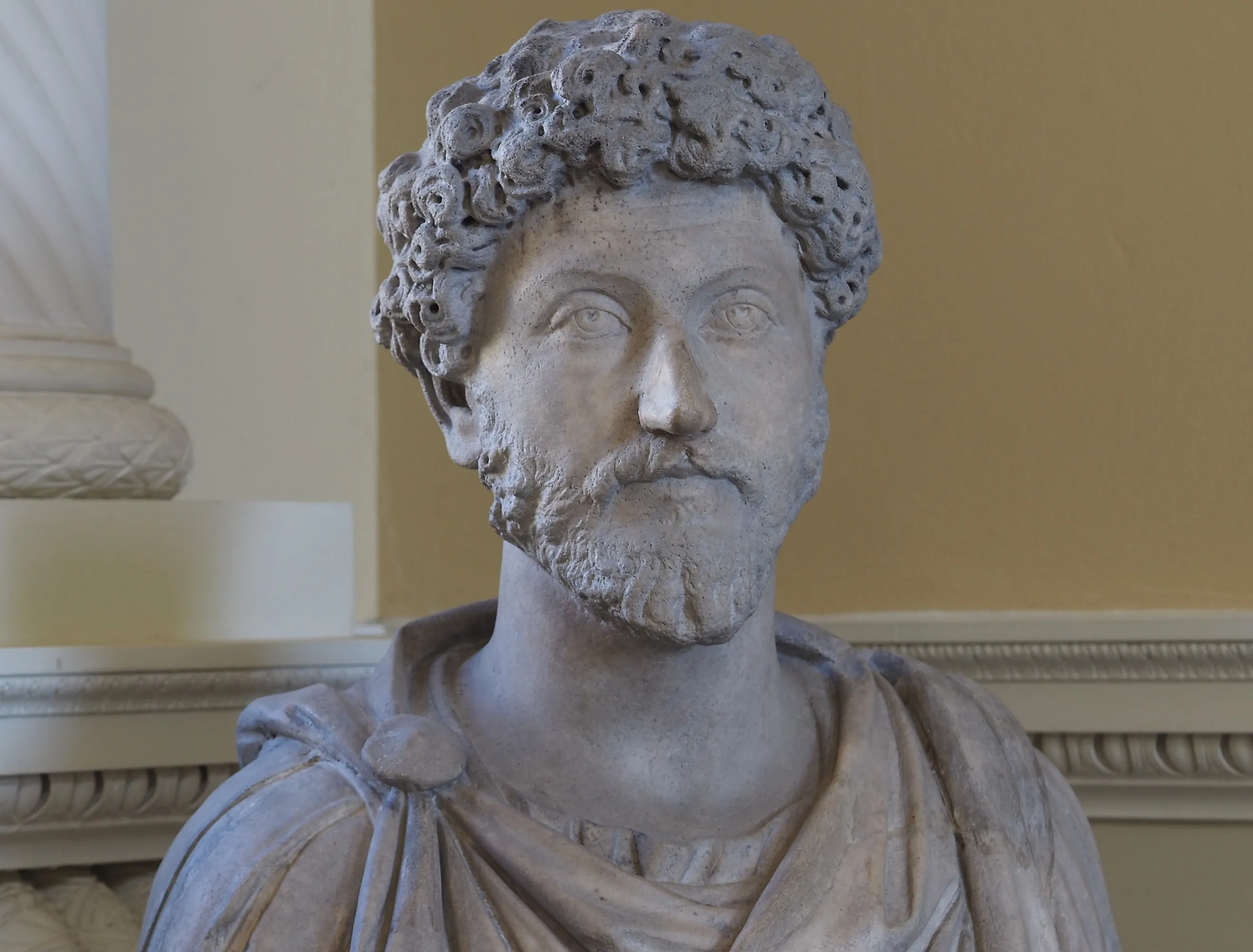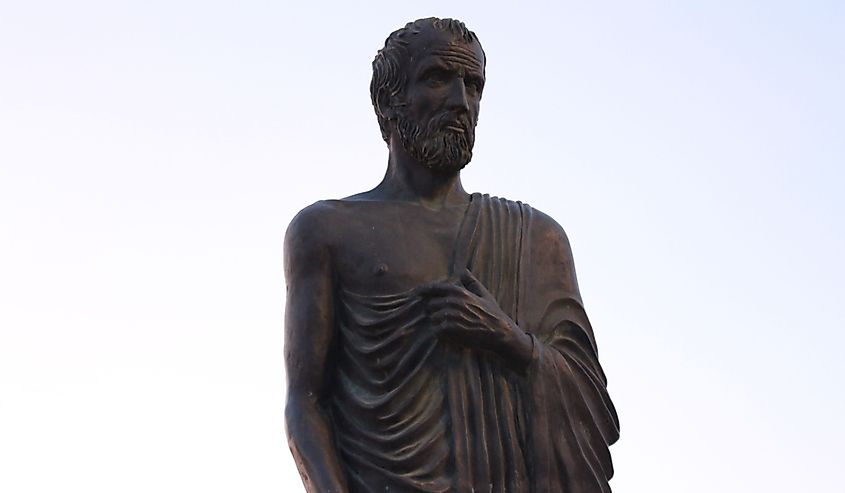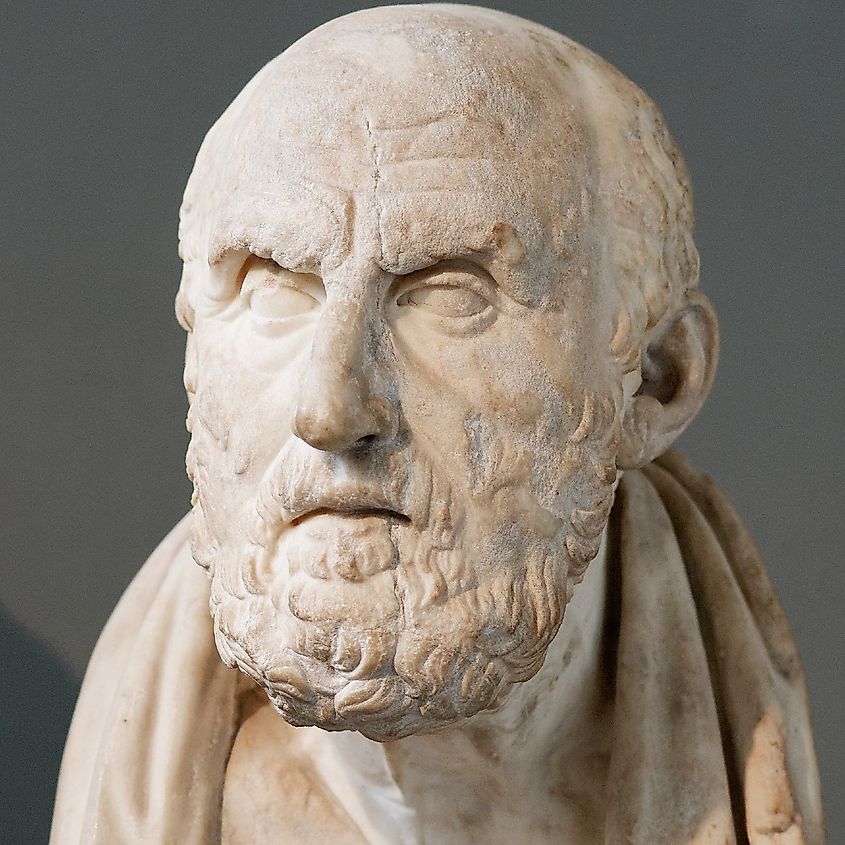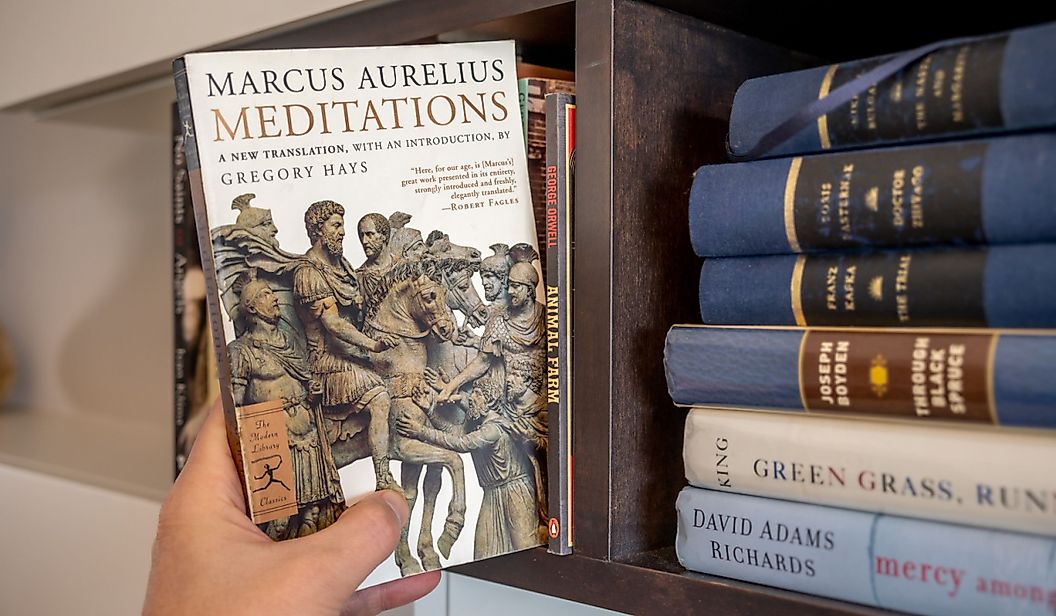
What is Stoicism?
There are a lot of misconceptions about what Stoicism is. A quick google search might lead you to believe the philosophy is a synonym for being emotionless. This is because Stoicism is often confused with stoicism. While the two are the same word, the capital 'S' Stoicism refers to the philosophy. The latter, smaller 's' stoicism, refers to the temperament that people attribute as being passive and unemotional.
This couldn't be farther from the truth of what Stoic philosophy is. While the philosophy requires a level of self-awareness, it does not require forgoing feeling. Stoicism is an age-old philosophy of personal ethics and a method for gaining practical wisdom in everyday life. It is not an individualistic philosophy. While it does focus on self-discipline, Stoicism also focuses on social responsibility, such as forming virtuous relationships and helping others. Stoicism is trendy today, but it also flourished in Ancient Greece and Ancient Rome.
Founding

Zeno of Citium founded Stoicism in Athens in 300 BCE. The name Stoicism comes from "Stoa Poikile," meaning painted porch. This is the place where Zeno taught his philosophy. Originally, Stoicism was Zenoism, but the name changed. Unlike other philosophers at the time, Zeno famously taught his philosophy in a public space. Zeno had various students and successors. His most influential successor was Chrysippus, who went on to be the leader of the school after Cleanthes. He molded the philosophy into what it is today.
Stoicism was a popular philosophy in Ancient Rome and Greece. It was one of the major schools of thought during the Hellenistic period to the Roman era. The philosophy stayed popular until the boom of Christianity in the 4th century BCE. The history of Stoicism has three phases: Early Stoa, Mid Stoa, and Late Stoa. Some of the major philosophers in the early stoa stage were Zeno of Citium, Cleanthes, Chrysippus, Diogenes of Babylon, and Antipater of Tarsus. There are no surviving works from the first two eras of Stoicism. The surviving works from the third phase of stoicism are from philosophers such as Musonius Rufus, Seneca, Epictetus, and Marcus Aurelius. The stoics from the last era are some of the most well-known.
Key Tenets

A key idea in Stoicism is the focus on our reactions and judgments. According to the Stoics, we react to our own judgments in situations, not the actual events. Stoicism advises us not to worry about things beyond our control. The Stoics also practiced virtue ethics. Stoicism is even one of the major founding approaches to the subfield of virtue ethics. A core tenet in stoicism virtue ethics is the idea that to achieve happiness, we have to practice virtue. The stoics believed that by practicing certain virtues, we could achieve eudaimonia, in other words, a flourishing life. The four cardinal virtues, according to Stoicism, are wisdom, courage, temperance, and justice. Each virtue means more than their traditional interpretation. Wisdom means resourcefulness, good sense, and discretion. Courage encompasses endurance, confidence, and cheerfulness. Temperance included good discipline, modesty, and self-control. Finally, justice meant piety, honesty, and equity.
Beyond virtue, the Stoics focus on the idea of reason. Reason is the gateway to knowledge in the Stoic view, and reason helps distinguish truth from fallacy. The senses also had a role in this perspective. According to the Stoics, the senses constantly receive sensations that leave an impression on the mind. The mind is not a silent actor in this process. Reason gives the mind the ability to judge an impression and distinguish how accurate the representation is.
The relationship between good judgment, self-control, and wisdom relates to the stoic view of passions. According to the Stoics, reason gives us the ability to free ourselves from passions. Passions were what the Stoics called irrational emotions such as distress, lust, fear, and delight. One of the Stoic goals is to be free of these passions. This is because these passions interfere with our ability to reason and see the world as it is.
Influence of Stoicism

Today, Stoicism has had an impact on more than philosophy lovers. The tenets inspired the creation of cognitive behavioral therapy, a therapy used to help treat conditions such as depression. One technique used in the therapy focuses on negative visualization. Some of the advice of the Stoics was that we spend time imagining that we have lost the thing we value. This makes us value the things in our lives more.
Learning More About Stoicism

Stoicism is a philosophy that has grown stronger with age. More than just a set of philosophical ideas, the philosophy has modern-day applications in therapy. Considering the influence of the philosophy, it is beneficial for everyone to learn more about Stoicism. A great start to learning about Stoicism is reading one of the surviving works from the late Stoa period. Marcus Aurelius wrote Meditations, which is one of the most influential works of its time. The book documents Aurelius's spiritual practice. Readers are sure to come away with a line or two to help them through troubled times. If you are curious about Stoicism, head to your local bookshop or library and check out Meditations; what have you got to lose?











